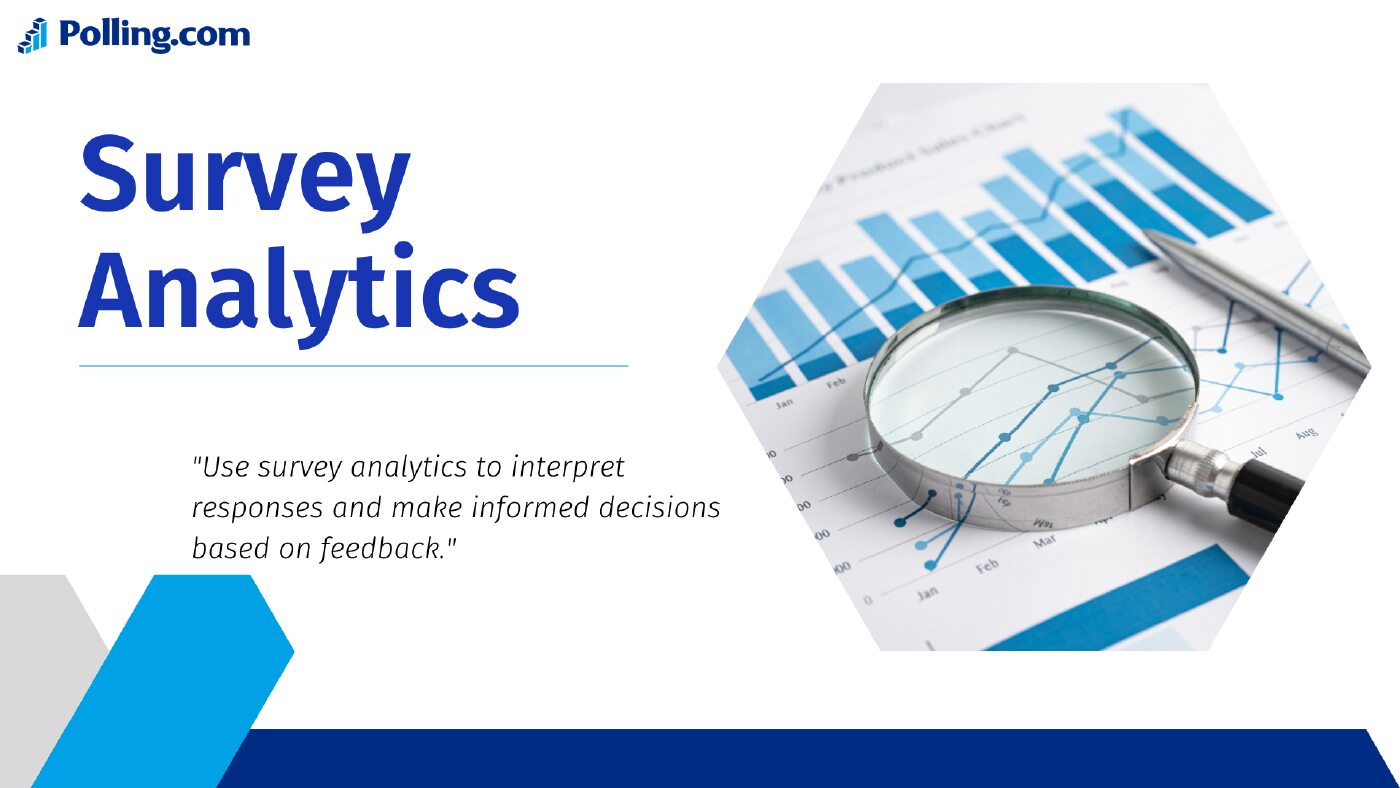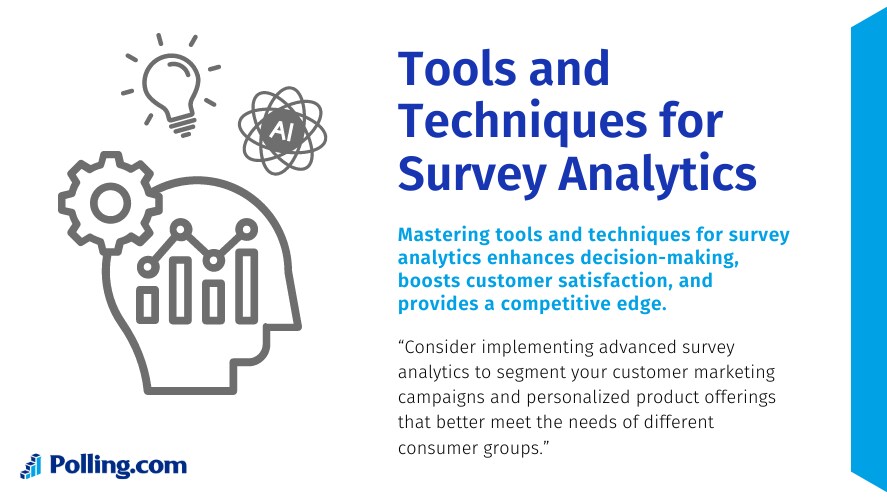
The Role of Survey Analytics in Data-Driven Decision Making
Have you ever wondered how businesses transform simple customer feedback into strategic goldmines? At the heart of this transformation lies the power of survey analytics, a crucial tool in interpreting and utilizing survey data effectively.
This method provides a pathway for enterprises to tap into valuable insights about customer behavior, preferences, and satisfaction, driving smarter, data-driven decision-making.
Purpose of the Article
This article explores the complexities of survey analytics, aiming to empower readers with the ability to analyze survey responses meticulously.
By the end, you’ll be equipped to apply these insights to refine strategies and enhance decision-making processes, ensuring your business actions are aligned with customer needs and market trends.
Understanding Different Types of Survey Questions

Surveys can vary significantly in their format and the type of data they capture.
Here’s a breakdown of the primary types of survey questions and their implications for data analysis:
1. Closed-Ended Questions
- Question Characteristics: These questions provide respondents with a set range of responses. For instance, multiple-choice questions simplify both the response process and subsequent data analysis.
- Statistical Analysis: Techniques such as frequency counts, percentages, and chi-square tests are commonly used to interpret these responses.
2. Open-Ended Questions
- Handling Qualitative Data: These questions allow for detailed, textual responses that capture nuanced feedback.
- Analysis Techniques: Coding responses into themes and performing content analysis are standard methods to extract meaningful patterns from the data.
3. Rating and Likert Scales
- Effective Interpretation: These scales measure attitudes or levels of agreement and are crucial for gauging respondent sentiment.
- Consistency Importance: Ensuring uniform scale points across questions helps in maintaining the accuracy and reliability of the data.
Tools and Techniques for Survey Analytics

Here are the tools and techniques for effective survey data analysis:
1. Statistical Software
- SPSS, SAS, and R: These are among the popular tools that facilitate detailed statistical analysis and are essential for handling complex survey data.
2. Data Visualization
- Graphs and Charts: Visual tools like bar charts, line graphs, and pie charts play a crucial role in summarizing survey results and making the data understandable at a glance.
- Dashboards: Interactive dashboards help stakeholders quickly sift through data and uncover important insights.
3. Advanced Analytical Techniques
- Cross-tabulation and Correlation Analysis: These methods help detect relationships and patterns in survey data, enriching the depth of analysis.
- Regression Analysis: Useful for predicting outcomes based on survey responses, providing a more predictive approach to survey data.
Common Challenges in Survey Analytics
1. Dealing with Incomplete Responses
- Strategies for Managing Missing Data:
- Example: In health surveys, missing data on lifestyle habits might lead to underestimating health risks.
- Techniques: Use of data imputation, which could involve regression models or machine learning to estimate missing values based on existing data, and maximizing insights from partial responses.
2. Response Bias
- Understanding and Mitigating Types of Bias:
- Example: Employee satisfaction surveys might suffer from acquiescence bias, where employees agree with all statements, falsely indicating higher satisfaction. Consumer feedback surveys may see social desirability bias, with customers overstating satisfaction to appear favorable.
- Strategies: Utilizing neutral question phrasing and validation techniques, such as cross-verifying responses with observable behaviors, to minimize biases.
3. Sampling Issues
- Strategies for Ensuring Representative Samples:
- Example: Political polling that overrepresents urban voters can misrepresent broader electoral sentiments.
- Methods: Implementing stratified sampling to ensure diverse demographic representation within subgroups and adjusting for biases like non-response by strategically over-sampling hard-to-reach groups to improve the accuracy and reliability of survey results.
Real-Life Examples of Survey Analytics

Application in Various Industries: Examples from sectors like retail, healthcare, and technology illustrate how effectively applied survey analytics can influence business strategies and customer service improvements.
- Retail:
- Example: A major retail chain uses customer satisfaction surveys to track shopping experiences across various stores. By analyzing this data with survey analytics, they identify regions with lower satisfaction scores and implement targeted staff training programs, enhancing customer service and increasing sales.
- Healthcare:
- Example: Hospitals frequently utilize patient feedback surveys to gauge satisfaction with care and facilities. Using survey analytics, they pinpoint areas for improvement, such as reducing wait times or enhancing communication between patients and medical staff, leading to better patient outcomes and increased hospital ratings.
- Technology:
- Example: A software company regularly collects user feedback on its products through online surveys. Analyzing these responses with survey analytics helps them to understand user needs and pain points, guiding the development of new features and updates that improve user satisfaction and product usability.
Conclusion
Survey analytics is more than just number crunching—it’s a strategic tool that can profoundly influence business decisions. As technology advances, integrating tools like AI in survey analysis is set to redefine how businesses understand and react to customer feedback.
By harnessing these advanced techniques, organizations can stay ahead in a competitive market, making informed decisions that are truly based on customer-driven data.
